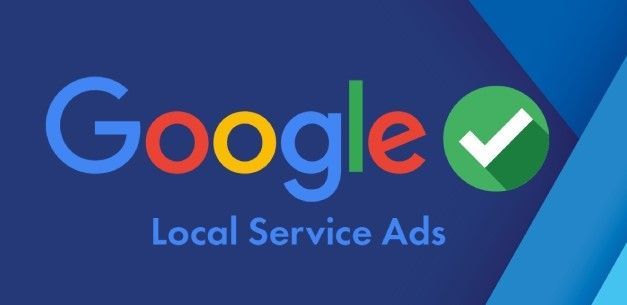In today's digital age, having a well-designed and customer-centric website is crucial for businesses in every industry, including pest control. A website serves as a virtual storefront, representing your brand and providing potential customers with their first impression of your business. In this article, we will explore the importance of developing a customer-centric pest control website design and discuss various strategies to create an engaging online presence.
Importance of a Customer-Centric Pest Control Website Design
A customer-centric website design focuses on meeting the specific needs and preferences of your target audience. By understanding their pain points, expectations, and browsing habits, you can customize your website accordingly. For a pest control business, this approach offers multiple benefits.
Understanding your customers' concerns allows you to address them directly on your website. By providing information and solutions related to pest fears, home safety, and effective pest control methods, you build trust and show that you understand their needs.
A customer-centric design also conveys professionalism. A well-designed website with intuitive navigation, professional visuals, and informative content creates a positive impression, demonstrating your commitment to high-quality pest control services.
Furthermore, such a design plays a vital role in lead generation. By tailoring your website to your audience's needs, you encourage engagement and prompt visitors to take action. This includes strategically placing calls to action, offering free quotes or consultations, and providing valuable content that addresses customer pain points. By generating leads through your website, you can convert visitors into customers and drive business growth.
Understanding Customer Needs and Preferences
To build a customer-centric website, understand your target audience through research on their demographics, interests, and online behavior. Tailor your site to meet their pest control needs by addressing their pain points and desires. Consider their age, gender, location, and occupation for relatable design and content. Align with their interests, like eco-friendliness for the environmentally conscious. Analyze how they navigate sites and make decisions to guide your website's design and functionality. Identify their challenges and expectations to provide relevant solutions. This research enables you to create a website that meets their needs, enhancing their experience and fostering loyalty.
User-Friendly Website Navigation
Responsive Design for Mobile Devices &
Engaging Visuals and Content
Optimizing your website for mobile devices is crucial due to the growing usage of smartphones and tablets. A responsive design ensures that your site adjusts to various screen sizes, delivering a consistent user experience across devices. Mobile-friendly websites enhance user satisfaction and contribute to better search engine rankings.
Captivating visuals and compelling content are vital elements of customer-centric website design. Utilize high-quality images and videos to showcase your services, team, and success stories. Craft informative and engaging content that educates visitors about pest control issues, prevention tips, and the advantages of your services. Maintain a consistent tone and voice that resonates with your target audience.
Calls to Action and Lead Generation
To create an effective pest control website, it's important to incorporate strategic calls to action (CTAs) that encourage visitors to take desired actions. Here are some key considerations:
- Strategic Placement:
Place CTAs strategically throughout your website, ensuring they are prominently displayed and easily accessible. Position them in areas where visitors are likely to engage, such as on the homepage, service pages, or at the end of informative content.
- Clear and Compelling Messaging:
Use concise and compelling language in your CTAs to clearly communicate the action you want visitors to take. For example, use phrases like "Contact Us," "Schedule an Appointment," or "Request a Quote." This helps visitors understand the next step they should take.
- Lead Capture Forms: Implement lead capture forms to gather visitor information and build your customer database for future marketing efforts. Keep the forms simple and only ask for essential information such as name, email address, and phone number. This allows you to follow up with potential customers and nurture leads.
- Visual Cues: Use visual cues such as arrows or buttons to draw attention to your CTAs and make them stand out. Employing contrasting colors or eye-catching design elements can also help make your CTAs more noticeable and compelling.
- A/B Testing:
Conduct A/B testing to assess the effectiveness of different CTAs and optimize their performance. Test variations in placement, wording, design, and colors to determine which CTAs generate the highest engagement and conversion rates.
By strategically placing CTAs, using clear and compelling messaging, implementing lead capture forms, and employing visual cues, you can encourage visitors to take desired actions on your pest control website. This will help generate leads, increase customer engagement, and ultimately drive business growth.
Social Proof and Testimonials
Optimizing Website Loading Speed
In the modern fast-paced world, the loading speed of a website plays a crucial role in user experience. To ensure optimal performance, consider the following:
- Image Compression: Compress images on your website to reduce their file sizes without compromising quality. This helps improve loading speed since smaller image files require less time to download.
- Code Minification: Minify your website's code by removing unnecessary characters, spaces, and comments. This reduces the file size of your HTML, CSS, and JavaScript files, resulting in faster loading times.
- Caching Techniques: Implement caching techniques to store certain elements of your website, such as images or CSS files, on a user's device. This allows subsequent page loads to be faster since the cached files can be retrieved locally instead of being fetched from the server again.
- Content Delivery Network (CDN): Consider using a CDN, which distributes your website's content across multiple servers located in different geographic locations. This reduces the distance between the server and the user, resulting in faster loading times.
- Mobile Optimization: Pay special attention to optimizing your website for mobile devices since they often have slower internet connections. Use responsive design techniques to ensure that your website adapts well to different screen sizes and loads quickly on mobile devices.
By implementing these strategies, you can optimize your website's performance and improve loading speed. A fast-loading website not only enhances user satisfaction but also has a positive impact on search engine rankings, leading to increased visibility and better overall user experience.
Monitoring and Analyzing Website Performance
To continuously enhance your website's effectiveness, it's important to regularly monitor and analyze its performance. Utilize website analytics tools such as Google Analytics to gather data on user behavior, popular pages, and conversion rates. By leveraging this information, you can make data-driven decisions to optimize your website and improve the overall user experience.
Here are some key steps to follow:
- Set up Website Analytics:
Implement a website analytics tool like Google Analytics to track and collect data on user interactions, traffic sources, and conversion metrics. Ensure that the tracking code is properly installed on all pages of your website.
- Analyze User Behavior: Utilize analytics reports to gain insights into how users navigate your website. Identify popular pages, entry and exit points, and the flow of user interactions. This data can help you understand user preferences and areas that may require improvement.
- Monitor Conversion Rates:
Track conversion metrics such as form submissions, contact inquiries, or online purchases. Analyze conversion rates and identify any bottlenecks or areas where users might be dropping off in the conversion process. This allows you to optimize those specific pages or processes to increase conversion rates.
- Identify Performance Issues:
Monitor website performance metrics such as page load times, bounce rates, and exit rates. Identify any slow-loading pages or high bounce rates, as these can impact user experience. Optimize these pages to improve loading speed and engage visitors for longer periods.
- A/B Testing: Conduct A/B testing to compare different versions of webpages or elements such as headlines, call-to-action buttons, or layout variations. Test different variations simultaneously and analyze the results to make informed decisions on what works best for your audience.
- Continuously Improve: Regularly review the analytics data and make iterative improvements based on the insights gained. Optimize content, design, and functionality to align with user preferences and enhance overall user experience.
By monitoring and analyzing your website's performance, you can gain valuable insights to drive ongoing improvements. Utilize the data provided by analytics tools to make informed decisions and optimize your website, ensuring that it effectively meets the needs of your target audience and delivers a seamless user experience.
To create a customer-centric pest control website, it is important to prioritize trust and credibility. This can be achieved by prominently displaying certifications, licenses, and affiliations. Additionally, featuring client success stories, case studies, and before-and-after photos helps showcase expertise and the positive outcomes of your services. It is also crucial to provide clear contact information and address frequently asked questions to alleviate common concerns. By understanding your target audience, optimizing user experience, and implementing SEO best practices, you can develop a website that engages visitors, generates leads, and builds trust. Regularly monitoring and analyzing website performance is essential for making data-driven improvements and staying competitive in the market.
FAQs
- How long does it take to develop a customer-centric pest control website design?
Developing a customer-centric pest control website design can vary in time depending on the complexity of the project. It may take several weeks to a few months to complete the design, development, and testing process.
- Is it necessary to have a mobile-friendly website for a pest control business?
Yes, having a mobile-friendly website is essential for a pest control business. With the increasing use of smartphones, many potential customers search for services on their mobile devices. A responsive design ensures a seamless user experience across all devices.
- How can I optimize my pest control website for local search?
To optimize your pest control website for local search, claim and optimize your Google My Business listing, include location-specific keywords in your content, and implement schema markup. Consistency in NAP (name, address, phone number) across directories is also crucial.
- What are some effective ways to generate leads through a pest control website? Some effective ways to generate leads through a pest control website include strategically placing calls to action (CTAs), offering free quotes or consultations, and implementing lead capture forms. Provide valuable content that addresses customer pain points and encourages them to take action.
- How often should I analyze my pest control website's performance? It is recommended to analyze your pest control website's performance regularly, at least once a month. Use website analytics tools to track user behavior, identify popular pages, and measure conversion rates. Regular analysis helps you identify areas for improvement and make data-driven decisions.








